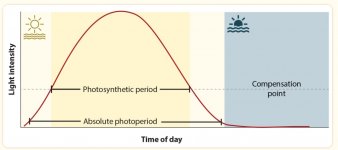Asentrouw
Well-known member
As I probably don't get a coherent answer anyway;
I have my reservations by how "saturated" a plant can be from 20.000 lumens light in a limited light spectrum, while in its natural habitat its subjected to over 127.000 lumens solarspectrum.
I'm all in favor for a dark period. But as far as I know the "dark cycle" is light-independent. These plant processes find place wether the lights are off or on.
I have my reservations by how "saturated" a plant can be from 20.000 lumens light in a limited light spectrum, while in its natural habitat its subjected to over 127.000 lumens solarspectrum.
I'm all in favor for a dark period. But as far as I know the "dark cycle" is light-independent. These plant processes find place wether the lights are off or on.





